Lighting fixtures play a critical role in the safe, efficient and productive operation of any industrial facility or production process. Darkened, enclosed and round-the-clock operations rely on them exclusively for illumination. Daylight operations benefit from the additional and spot lighting they provide. However, facilities, such as petrochemical, food processing and grain storage, require more from their lighting fixtures. In addition to providing light, fixtures for these industries must address and overcome the inherent challenges of hazardous environments.
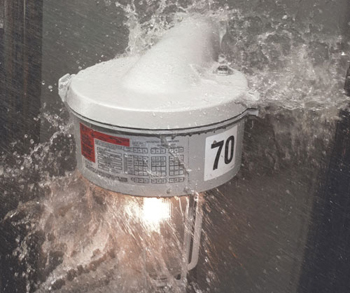
Safety lighting
Hazardous environment lighting fixtures are designed to specifically handle the highly corrosive elements, combustible dusts and flammable gases and vapors that are endemic to these industries. This article examines the distinct hazardous environments defined by global electrical codes, which fixtures are suited for them and technologies that are on the way to help keep light fixtures operating longer and safer. This information provides the foundation for achieving optimal plant safety and efficiency through proper lighting, safe electrical installation and operation.
Around the world, hazardous locations are broken down into different categories. Each category defines the type of hazard present, its explosive force and if its exposure is part of normal or abnormal facility operations.
Class of threats
The National Electrical Code (NEC) and the Canadian Electrical Code (CEC) define hazardous environment combustible dusts and flammable gases and vapors into three separate classes. Class I locations are categorized by the flammable gases and vapors present in industries such as natural gas, petroleum and chemical.
Class II locations contain combustible dusts. These dusts can be carried aloft during pulverizing processes or compacted in storage centers. Combustible dusts are found inside plastic, pharmaceutical, coal and flour processing locations.
Class III locations contain the ignitible fibers and flyings that are produced in the wood, cotton, and textile industries, among others.
Groups within each class

Figure 1. Summary of classes and groups courtesy of Appleton
Class ratings are further broken down into groups, which identify the explosive pressure created by the gas, vapor or dust (figure 1).There are three distinct classes of flammable compositions. Class I locations consist of Groups A, B, C and D:
- Group A, acetylene, features the highest out ward pressure during an explosion
- Group B is hydrogen
- Group C is ethylene
- Group D is gasoline
Class II locations are divided into Groups E, F and G based on electrical resistivity charts listed in ANSI/ISA-S 12. 10-1988.
- Group E is combustible metal dust such as aluminum and magnesium
- Group F consists of coal, printer ink powder and coke
- Group G features agricultural dusts such as cake mix, grain dust and flour
Class III locations are not broken down into groups.
Define the presence with divisions
NEC/CEC Divisions define hazardous environments by the amount of the exposure to the gases, vapors, dusts or flyings and fibers. Division 1 classifies hazardous atmospheres in which the flammable gas or vapor or combustible dust is present during normal operations or routine maintenance. The existing or potential hazardous atmosphere must also be in the right mixture concentrations to be ignitible. Thus, proper ventilation can change a Division 1 location into a Division 2 location.
Division 2 locations are where hazards are encountered only during an abnormal situation, such as equipment failure or a spill. Locations adjacent to Class I, Division 1 areas may be deemed Division 2, as well, to accommodate for the potential seeping of gases or vapors.
Around the globe
The International Electrotechnical Commission (IEC) classifies hazardous locations into zones, groups and gas groups. Zones are similar to the NEC/CEC Divisions, except that they classify three levels of the existence of hazardous atmospheres instead of two.
- Zone 0: hazardous atmospheres are continuously present
- Zone 1: hazardous atmosphere is often present
- Zone 2: hazardous atmosphere may accidentally be present.
Groups are used to denote equipment used for the mining industry. Group I consists solely of mines. Group II encompasses every industry, but mining. The Gas Groups of A, B, and C rate the pressure caused by an ignited gas, vapor or dust, much like theNEC/CEC Group; however, they are placed in the opposite order. Gas Group C therefore represents the extreme force of hydrogen and acetylene while Gas Group A denotes the less destructive forces of gasoline and natural gas.
Safely lighting facilities for the different classes, groups and divisions requires engineering and manufacturing a variety of fixture designs. Each design incorporates features that meet the specific rating criteria of the hazardous location.
Enclosed and gasketed fixtures for Class I, Division 2 and for Class II
Class I, Division 2 fixtures must be gasketed to prevent the hazardous atmosphere from entering the fixture’s interior. As such, enclosed and gasketed fixtures are most suitable for this environment. Class II fixtures also have to function under a blanket of explosive dust as grain silos and other agricultural and mineral processing plants position lights where they can get covered by dust or grains for extended periods of time. These conditions mandate that enclosed and gasketed fixtures prevent dust egress and keep temperatures low. Internal control components need to be engineered to radiate less heat. Surfaces need to be contoured to prevent accumulation of dust on the fixture and to reduce blanketing. If fixtures are not engineered properly, exterior light temperatures can soar.
Explosionproof fixtures for Class I, Division 1
Due to the ever-present condition of hazardous gases or vapors, fixtures placed in Class I, Division 1 locations must ensure that ignition is never allowed into the environment.
To do this, engineers calculate that the gas or vapor has successfully leaked into the interior of the fixture and has ignited. To prevent ignited gases or vapors from propagating to the surrounding atmosphere, explosionproof fixtures feature engineered flamepaths. The flamepaths vent the pressure of an explosion by allowing the gases to escape to the outside atmosphere only after the gas has traveled within the fixture’s flamepaths long enough to cool. Cooled gases are released from the flamepaths at temperatures that will not ignite the surrounding flammable atmospheres. Depending on the fixture’s design and application, these flamepaths can be incorporated into ground joints, threaded joints, labyrinth-paths, close tolerance shafts, interlocking concentric rings and precision acme/conical threads.
Keeping your cool in hazardous atmospheres
A light that lasts longer is safer for the production line and the maintenance crew. It provides more light over its lifetime and reduces the potential of a maintenance-related accident by stretching out the amount of time between servicing. Simply put, cooler running lamps stay lit longer. That’s why it is important to design and manufacture enclosed and gasketed and explosionproof fixtures that reduce the amount of heat they produce. Light fixture manufacturers do this through electrical, mechanical and thermal engineering. Product designs need to take into consideration such facets as the placement of internal control gear to reduce heat buildup, the use of reflectors to help in heat dispersion while producing higher photometric efficiencies and metallurgy techniques and bracket placement to draw heat away from the internal components and direct it out through the casing.
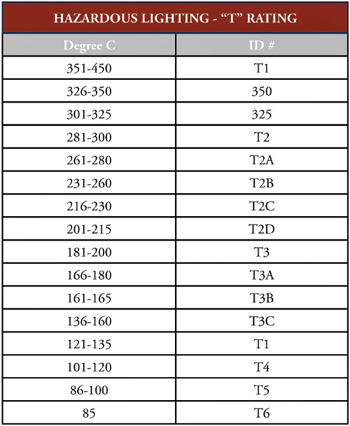
Temperatures to a “T”
The “T” rating for a fixture is the temperature of the hottest spot on or in the luminaire depending on the luminaire’s class or zone rating. Whether the “T” rating is recorded on or in the luminaire depends on whether it is an explosionproof, flameproof, enclosed and gasketed or restricted breathing fixture. For explosionproof and flameproof fixtures, the “T” ratings are measured on the exterior of the fixture. This is due to the explosionproof and flameproof fixture’s ability to disarm any explosion caused within the interior of the fixture. Therefore, the exterior temperature of the fixture becomes the forerunning concern. Enclosed and gasketed fixtures measure their “T” ratings on the inside. If a hazard is accidentally released into the atmosphere and reaches inside the fixture, it will not ignite assuming the fixture’s “T” rating is below that of the hazard. Restricted breathing fixture construction is similar to enclosed and gasketed but requires a seal to give the product the “”restricted breathing”” rating. This allows restricted breathing fixtures to have their “T” ratings measured from the surface of the fixture.
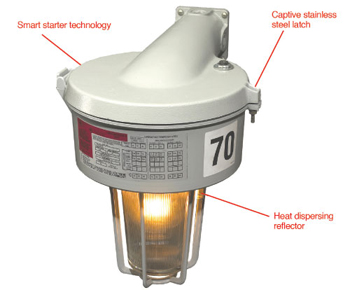
Complex engineering made simple
Unfortunately, this leads to mistakes that could be avoided. Using the appropriate lamp also contributes to fixture durability and heat build-up. Only lamps of the proper rating for the fixture should be used, not higher or lower.
For example, a 100-watt lamp in a 150-watt fixture can cause the internals to overheat and increase the fixture’s “T” rating without any external warning or indication. Using a different wattage lamp, not found on the nameplate, voids the fixture warranty, violates the UL-rating and can put the entire facility and its workers at risk.
Safely lighting the way
Lighting in hazardous locations is a necessity and a potential danger. Knowing the facility environment, combustible composition and fixture application enables the proper lighting design for a safe and productive working environment.
References
1Haley, Mike, et al. “Benefits and concerns with NEC® Section 501.1 in reference to Zone 2 lighting in Division 2 areas.” IEEE Paper No. PCIC-2004-47. 7 pages
© 2007, EGS Electrical Group. All rights reserved. Reprinted by permission.







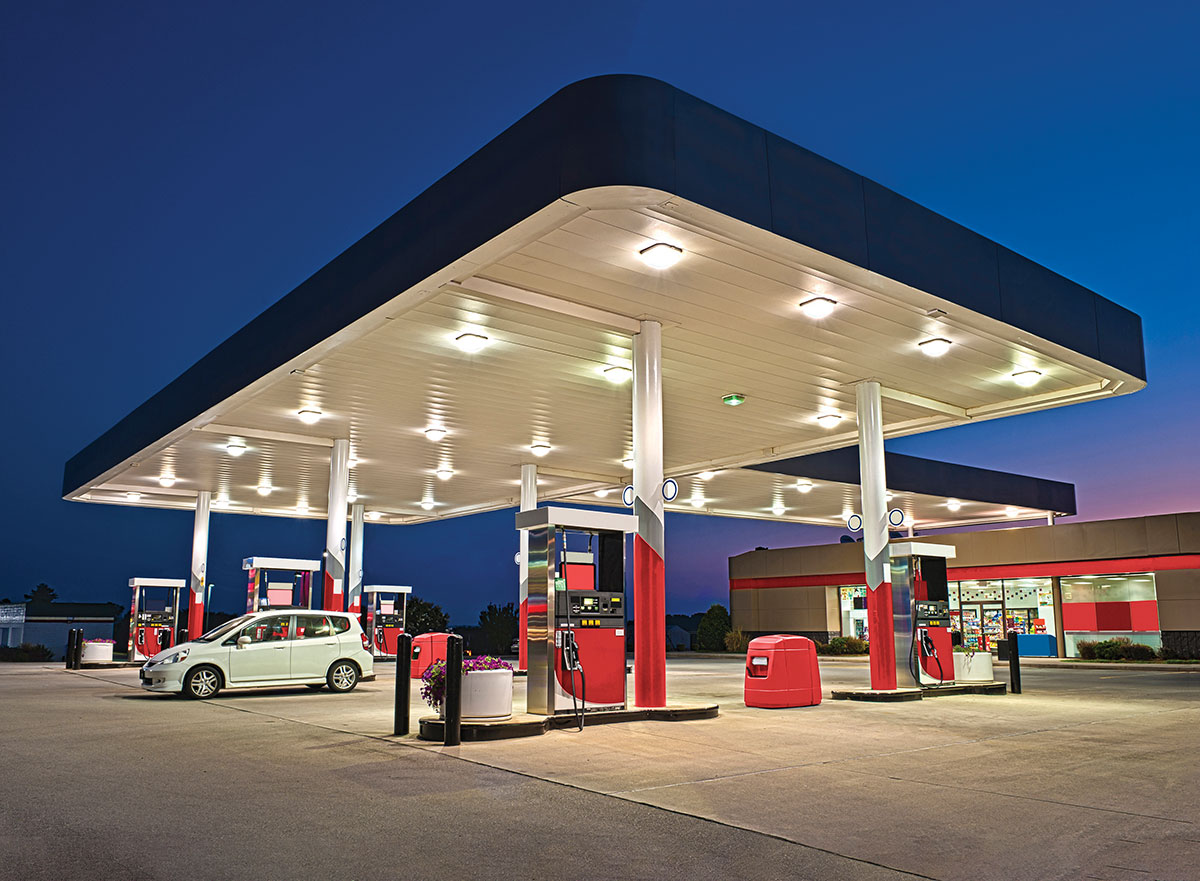

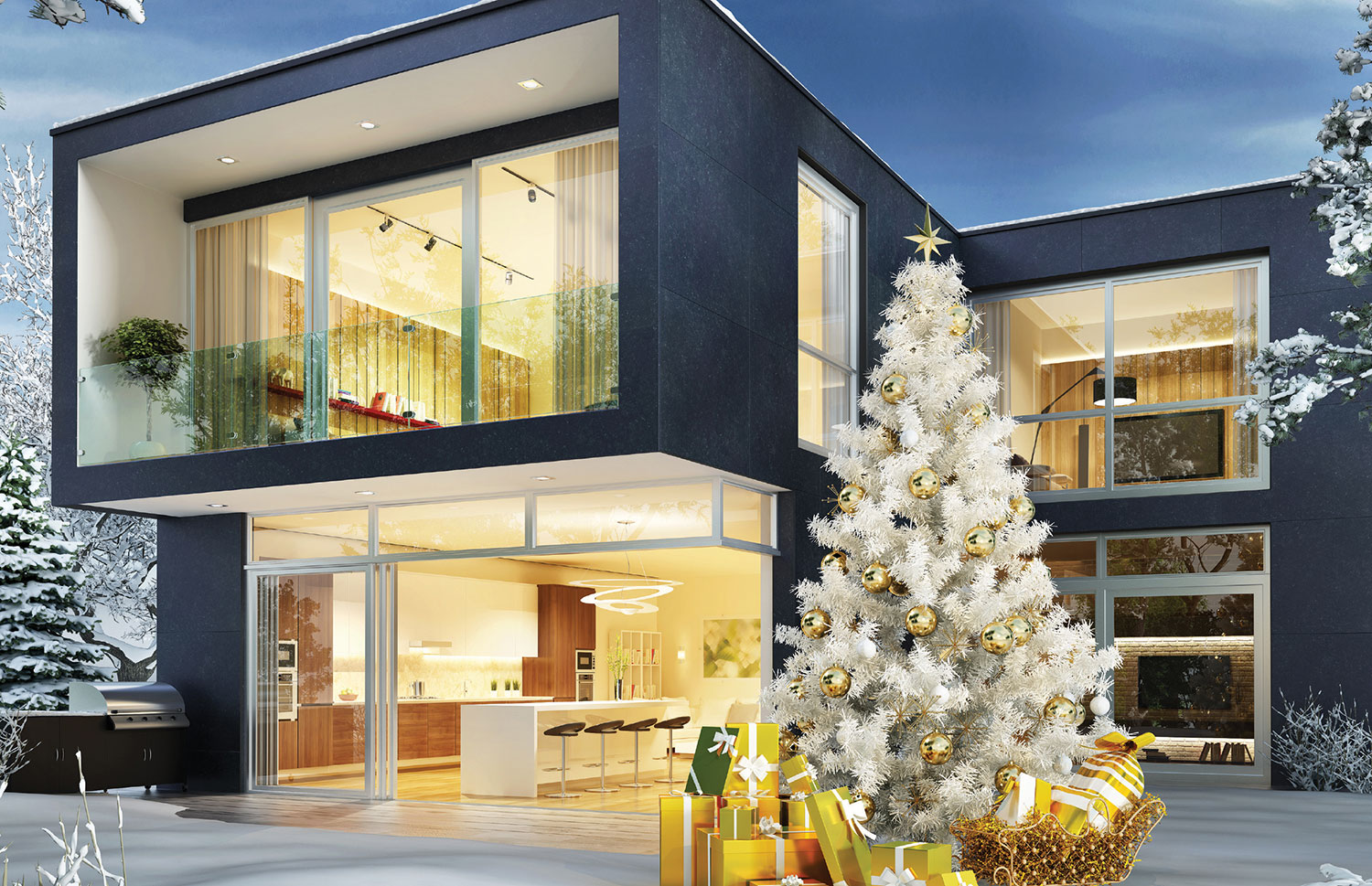
Find Us on Socials